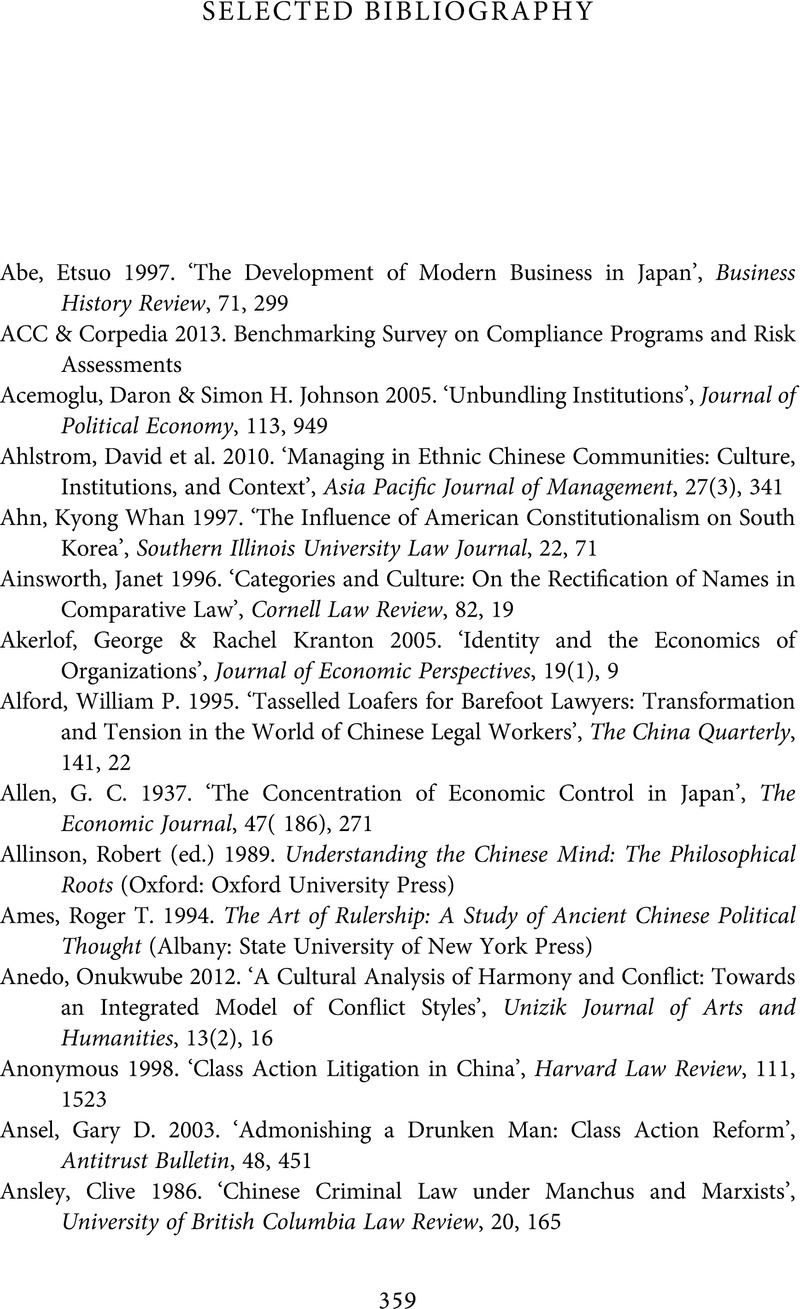Book contents
- Confucian Culture and Competition Law in East Asia
- Confucian Culture and Competition Law in East Asia
- Copyright page
- Contents
- Preface
- Abbreviations
- 1 Introduction
- 2 Confucian Culture and Its Influence in East Asia
- 3 Confucian Business Culture and Its Implications for Competition Law
- 4 Confucian Corporate Culture and Competition Compliance
- 5 Confucian Political-Bureaucratic Culture and Its Links with the Administrative Enforcement of Competition Law
- 6 Confucian ‘Litigation Culture’ and the Under-development of Private Antitrust Enforcement
- 7 Confucian Legal Culture and the Regional Response to the Criminalization of Cartel Conduct
- 8 Conclusion
- Selected Bibliography
- Index
- References
Selected Bibliography
Published online by Cambridge University Press: 01 September 2022
- Confucian Culture and Competition Law in East Asia
- Confucian Culture and Competition Law in East Asia
- Copyright page
- Contents
- Preface
- Abbreviations
- 1 Introduction
- 2 Confucian Culture and Its Influence in East Asia
- 3 Confucian Business Culture and Its Implications for Competition Law
- 4 Confucian Corporate Culture and Competition Compliance
- 5 Confucian Political-Bureaucratic Culture and Its Links with the Administrative Enforcement of Competition Law
- 6 Confucian ‘Litigation Culture’ and the Under-development of Private Antitrust Enforcement
- 7 Confucian Legal Culture and the Regional Response to the Criminalization of Cartel Conduct
- 8 Conclusion
- Selected Bibliography
- Index
- References
Summary

- Type
- Chapter
- Information
- Confucian Culture and Competition Law in East Asia , pp. 359 - 411Publisher: Cambridge University PressPrint publication year: 2022

